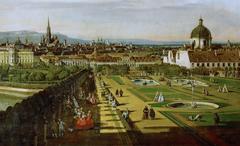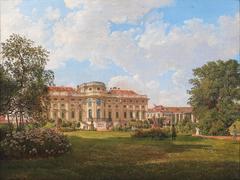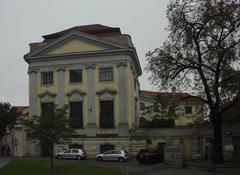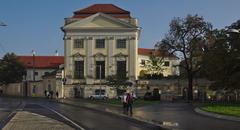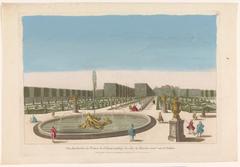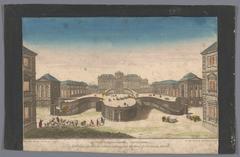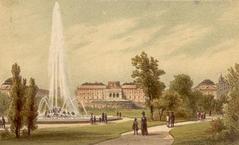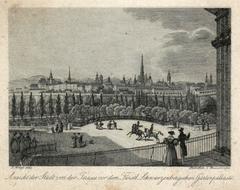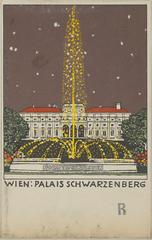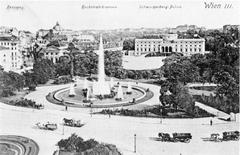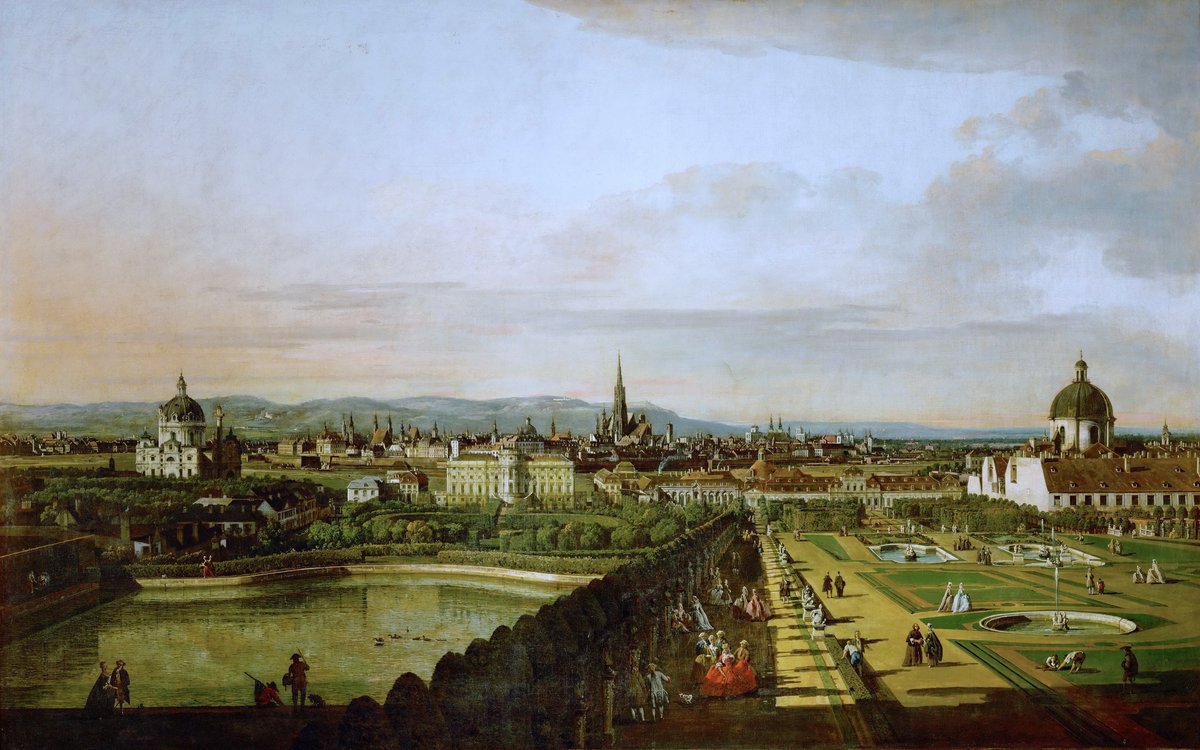
Palais Schwarzenberg Vienna: Visitor Guide, Tickets, Hours & History
Date: 15/06/2025
Introduction: The Legacy of Palais Schwarzenberg Vienna
Palais Schwarzenberg stands as a distinguished symbol of Vienna’s Baroque era and aristocratic legacy, showcasing the city’s historic splendor through its architecture, gardens, and ongoing cultural life. Commissioned in the late 17th century and completed in the early 18th, the palace was shaped by famed architects Johann Lukas von Hildebrandt and the Fischer von Erlach family (Wikipedia). Its ornate façade, Daniel Gran’s evocative frescoes, and terraced gardens form an essential part of Vienna’s UNESCO-listed historic center.
Positioned at Schwarzenbergplatz in Vienna’s 3rd district, the palace offers both locals and visitors a unique window into imperial Austria’s social, political, and artistic traditions. The Schwarzenberg family’s influence, the palace’s pivotal role in major historical events, and its function as a vibrant cultural venue today make it an essential stop for anyone exploring Vienna’s historical treasures (Awesome Vienna, GeschichteWiki).
This comprehensive guide details Palais Schwarzenberg visiting hours, ticketing, accessibility, historical highlights, and practical visitor tips to ensure you make the most of your experience at this Baroque masterpiece.
Table of Contents
- Origins and Construction
- Architectural and Artistic Highlights
- The Baroque and English Gardens
- Ownership and Historical Significance
- Modern Use and Cultural Events
- Visitor Information
- Nearby Attractions
- FAQs
- Conclusion
- References
Origins and Construction
The story of Palais Schwarzenberg began in 1697 with its commission by Heinrich Franz Graf von Mansfeld and Fürst von Fondi. The initial shell, designed by Johann Lukas von Hildebrandt, was completed by 1704 but left unfinished upon the patron’s death. In 1716, Adam Franz Karl Fürst von Schwarzenberg acquired the estate, tasking the Fischer von Erlach family with its completion. Artistic highlights from this era include Daniel Gran’s 1726 cupola fresco and exquisite supraporten (overdoor paintings) (Wikipedia).
Architectural and Artistic Highlights
Palais Schwarzenberg epitomizes Viennese Baroque, featuring a rusticated base, central vestibule, arcades, and a distinctive crowned roofline. The main hall is adorned with Gran’s frescoes, while ceremonial rooms display intricate stucco and reliefs by Joseph Emanuel Fischer von Erlach. Furnishings and art collections reflect the Schwarzenberg family’s aristocratic heritage (GeschichteWiki).
The Baroque and English Gardens
The palace gardens, co-designed by Hildebrandt and the Fischer von Erlach family, originally followed an Italian-French terraced plan, complete with central axes, fountains, and allegorical statues like the “Raptusgruppe” and “Vier Jahreszeiten” by Lorenzo Matielli. In the 19th century, parts of the gardens were transformed into English landscape style, and today, they uniquely feature Vienna’s only central urban vineyard (Wikipedia, tourmycountry.com).
Ownership and Historical Significance
The estate has remained with the Schwarzenberg family since 1716, serving as a center of aristocratic life and political power in the Habsburg era. The palace weathered WWII bombings and underwent significant restorations by the mid-20th century (Wikipedia, GeschichteWiki). Notably, its proximity to the Soviet War Memorial highlights its continued relevance in Austria’s modern narrative (tourmycountry.com).
Modern Use and Cultural Events
Today, Palais Schwarzenberg is a multifaceted venue. While its interiors are generally closed to the public, the gardens and select spaces open for guided tours, exhibitions, and major events. The palace hosts the annual “Theater im Park am Belvedere” festival, transforming its historic gardens into a lively stage for music, theater, and cabaret from late May to mid-September (events.wien.info). The palace has also been used as a luxury hotel, embassy, and restaurant, with new plans for hotel reopening and expanded cultural programming by 2026 (Awesome Vienna).
Visitor Information
Visiting Hours and Tickets
- Gardens: Open to the public seasonally, especially during festivals and special events. Check the official website for current schedules.
- Interiors: Access is limited to guided tours and ticketed events; advance booking is essential.
- Tickets: Prices range from €12–€20 for guided tours, with discounts for students, children, and seniors. Event tickets may vary.
Accessibility
- Wheelchair access is available for main event spaces and gardens, but some upper floors may be inaccessible due to the palace’s historic structure.
- Staff assistance is available on request; contact the administration before your visit to discuss specific needs.
Getting There
- Address: Schwarzenbergplatz 9, 1030 Vienna, Austria.
- Metro: Stadtpark (U4 line), ~5-minute walk.
- Tram: Lines 1, 2, D to Schwarzenbergplatz.
- Train: Landstrasse-Wien Mitte, 10 minutes on foot.
- Parking: Limited; public transport is recommended.
Nearby Attractions
- Belvedere Palace: Renowned for Klimt’s “The Kiss” and its own Baroque gardens.
- Vienna State Opera: Iconic venue for world-class performances.
- Stadtpark: Famous for the golden Johann Strauss monument.
- Schwarzenbergplatz: Home to the Soviet War Memorial and Hochstrahlbrunnen fountain.
FAQs
Q: What are Palais Schwarzenberg’s visiting hours?
A: Hours vary with events and renovations; check the official website for up-to-date information.
Q: How do I book tickets?
A: Book online via the palace’s website or authorized partners. Advance booking is strongly recommended.
Q: Is the palace accessible for visitors with disabilities?
A: Main spaces and gardens are accessible, but some historic rooms may require stairs.
Q: Are tours available in English?
A: Yes, tours are conducted in both German and English.
Q: Can I photograph inside the palace?
A: Photography is allowed in gardens and public areas; restrictions may apply indoors or during private events.
Conclusion
Palais Schwarzenberg is a jewel of Vienna’s Baroque landscape, blending historical grandeur with vibrant contemporary culture. From its ornate halls and lush gardens to its dynamic event programming, the palace invites visitors to experience Austria’s imperial legacy firsthand. Plan your visit by confirming current hours and tickets, and enrich your Vienna trip with this unforgettable encounter.
For the latest updates, events, and ticketing, visit the official Palais Schwarzenberg website.
Enhance your journey: Download the Audiala app for guided tours and expert tips, and explore related Vienna historical sites to create a memory-filled itinerary.
References
- Palais Schwarzenberg Visiting Hours, Tickets, and Historical Guide to Vienna’s Baroque Palace, 2024, Wikipedia (https://de.wikipedia.org/wiki/Palais_Schwarzenberg_(Schwarzenbergplatz))
- Palais Schwarzenberg: Visiting Information, History, and Tips for Tourists, 2024, Official Website (https://www.palais-schwarzenberg.at)
- Cultural and Social Significance, 2024, TourMyCountry (http://www.tourmycountry.com/austria/palais-schwarzenberg.htm)
- Palais Schwarzenberg Visiting Hours, Tickets, and Visitor Guide to Vienna’s Historic Palace, 2024, Awesome Vienna (https://awesomevienna.at/palais-schwarzenberg)
- Theater im Park am Belvedere 2025, 2025, Events Wien (https://events.wien.info/en/129l/theater-im-park-am-belvedere-2025/)
- Palais Schwarzenberg, GeschichteWiki (https://www.geschichtewiki.wien.gv.at/Palais_Schwarzenberg)

